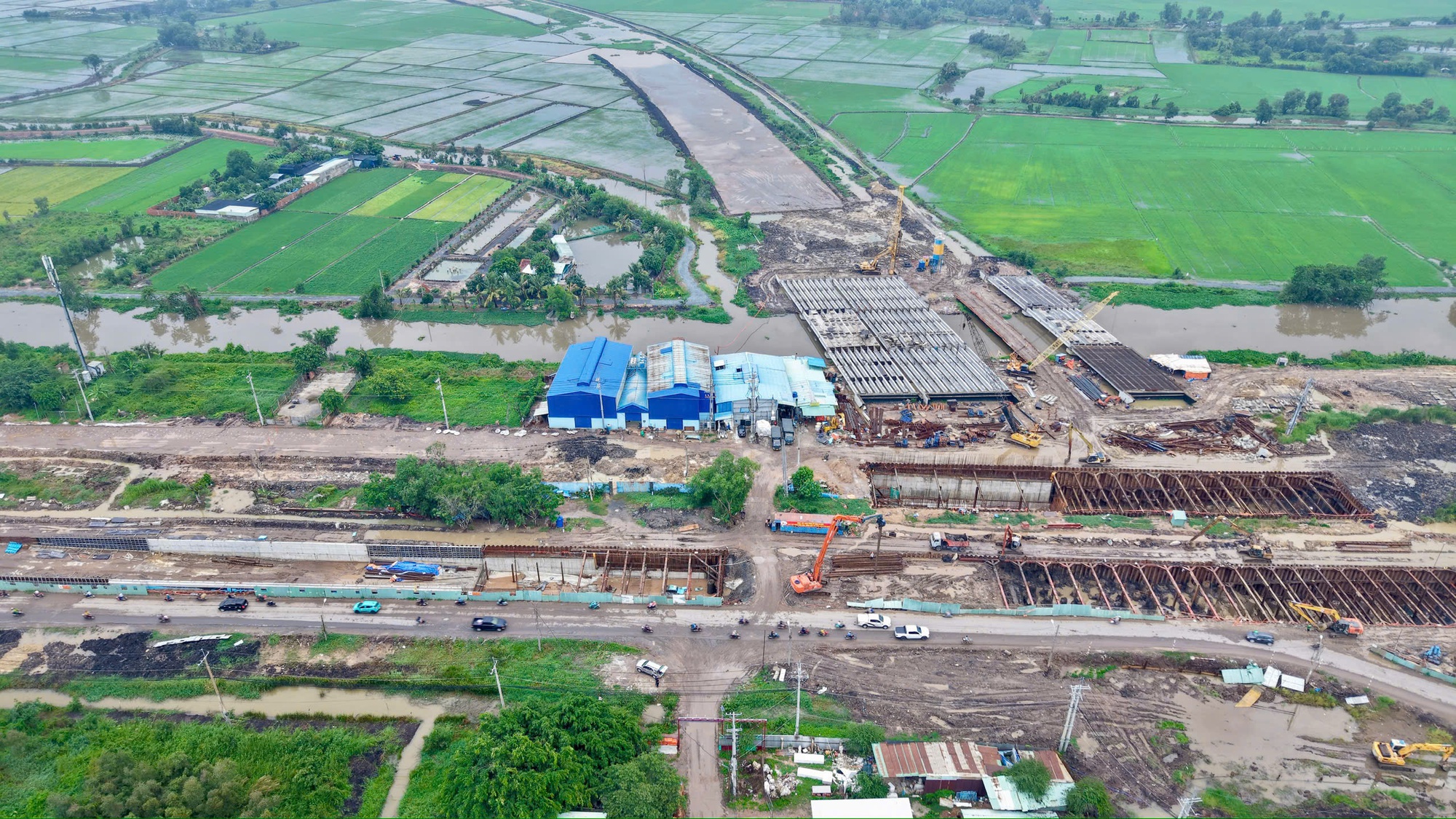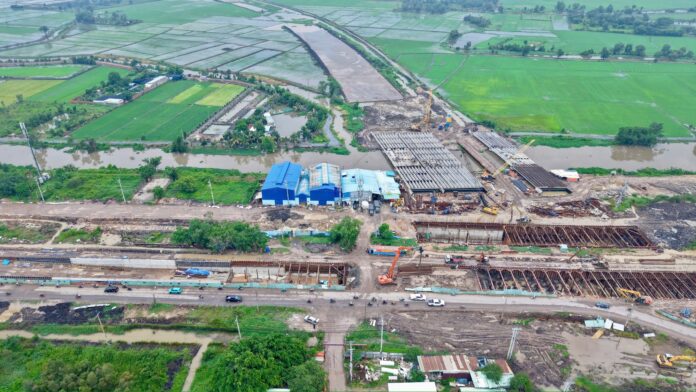Streamlining Sand Transportation for Ho Chi Minh City’s Belt Road Project
Ho Chi Minh City’s Construction Department has proposed dedicated transportation routes, dubbed “green channels,” to ensure a smooth and efficient supply of sand for the Belt Road Project, specifically the section traversing through Cu Chi, Hoc Mon, and Binh Chanh districts.

Approximately 3.6 million cubic meters of sand is required for the five contracts in the western region of the Belt Road Project for 2025.
These green channels, ranging from 150 to 240 km in length, will connect legal sand mines in Tien Giang, Vinh Long, and Ben Tre provinces to the construction sites in the aforementioned districts. The proposed routes will utilize inland waterways to transport sand, with the first route supplying Cu Chi, the second serving Hoc Mon, and the third catering to Binh Chanh.
According to estimates, the western region of the Belt Road Project will require approximately 3.6 million cubic meters of sand for the five contracts in 2025. This equates to around 3,610 barge trips, averaging 30 trips per day. Sand will be sourced from licensed mines and assembled at 24 inland waterway ports in Ho Chi Minh City.
To regulate and monitor transportation activities, the Construction Department has recommended that the city’s Traffic Project Management Board issue QR codes for the 102 participating watercraft. These codes will be accompanied by legitimate documents, including invoices and proof of sand origin, as well as departure and destination information.
Additionally, an inter-sectoral task force has been established to inspect vessels using the Zalo software. This task force comprises the city’s police, border guards, port authorities, and relevant units. Inspections will be conducted only once per trip, and the inspection results will be mutually recognized among stations to prevent delays caused by redundant checks.
By establishing these green channels, Ho Chi Minh City aims to optimize material transportation and ensure the timely completion of the Belt Road Project, a key national infrastructure project.
Transportation Management Board Steps Up Efforts
The shortage of sand remains one of the most significant bottlenecks hindering the progress of Ho Chi Minh City’s Belt Road Project. According to Mr. Luong Minh Phuc, Director of the Traffic Project Management Board, the entire route is still lacking approximately 3.7 million cubic meters of sand. The western region, encompassing Cu Chi, Hoc Mon, and Binh Chanh districts, requires about 5 million cubic meters, but only 1.5 million cubic meters have been supplied so far. To stay on schedule, the project needs an additional 2 million cubic meters of sand by June.
Over the past two years, the city has proactively engaged with sand-rich provinces like Tien Giang, Ben Tre, and Vinh Long, and has also reported to the Prime Minister to seek support. The government has held several meetings and directed efforts to address material-related challenges. As a result, 14 sand mines have been licensed, although the supply progress is slower than initially committed.
“We have proposed a special mechanism to increase extraction capacity by 50%. Additionally, many contractors are actively purchasing commercial sand and importing sand from Cambodia to make up for the shortfall,” said Mr. Phuc. While acknowledging the remaining obstacles, he affirmed that progress in sand supply is improving. Along with adjustments in construction methods and accelerated treatment of weak soil, the city is determined to complete the project as planned.
“We are not being optimistic just for the sake of reporting. The current solutions are grounded in practical considerations and are proving effective,” Mr. Phuc emphasized.
The Billionaire’s Next Move: Will Vietjet’s Nguyen Thi Phuong Thao Take On Ho Chi Minh City’s Metro Project?
“Hanoi’s leadership is highly supportive of local Vietnamese businesses taking on the city’s ambitious railway system development. Chairman of the Ho Chi Minh City People’s Committee, Nguyen Van Duoc, expressed his encouragement for domestic enterprises to take part in this transformative project, marking a significant step forward for the city’s infrastructure.”
The Metropolis of the South-East: A New Vision with a $630 Million Project Spanning 32 Hectares
The Tan Binh New Urban Area project is an ambitious undertaking with a staggering investment of nearly VND 15,000 billion.
“Hoaxers Exposed: Hoaxers and Influencers Face the Music in Ho Chi Minh City”
“Unveiling the Ultimate Influencer List: Navigating the Trustworthy and the Treacherous.
This carefully curated list serves as your compass to navigate the ever-expanding landscape of online influencers. It’s your guide to uncovering the credible voices that resonate and the cautionary tales that warrant a cautious approach.”





















